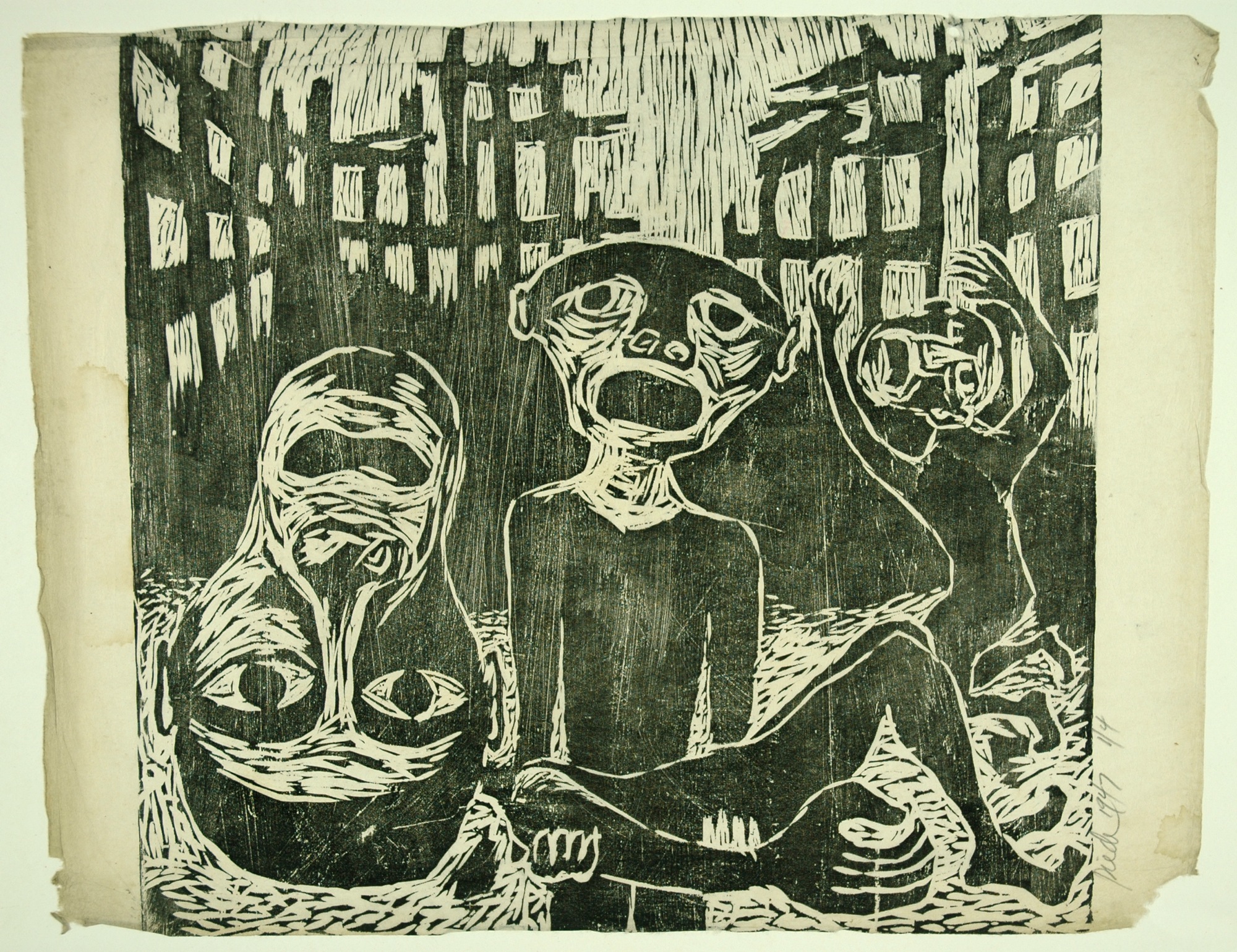Blog: Mark Wilson
Mark Wilson from Manchester's People’s History Museum on curating an exhibition by the fiercely political Paul Peter Piech
I first came across Paul Peter Piech’s art while at college and have since come to consider him to be one most interesting and important printmakers of the 20th century. His distinct style is instantly recognisable, with its combination of bold imagery and expressive hand-cut lettering that so effectively conveys Piech’s often political messages. So I was excited when the opportunity came along for the People’s History Museum to co-curate an exhibition of his work, with Jim Creed of the regional print centre in Wrexham.
Piech was born in 1920 to Ukrainian parents and grew up in a tough Brooklyn neighbourhood. He studied graphic design at the Cooper Union School of Art in New York, which was set up to give the working classes, women and minorities access to a free art education. His studies were put on hold with the outbreak of the Second World War and he served with the 8th Air Force, in East Anglia, as ground crew.

At the end of the war he completed his studies at the Cooper Union before moving back to Britain in 1947 to marry Irene Tomkins, a nurse from Aberdare, South Wales. They moved to London where Piech studied fine art and lithography at the Chelsea School of Art during the day while freelancing for London advertising agencies. Many well-known advertising campaigns made up his work, including BP and British Steel, examples of which can be seen in the exhibition.
While still working in the advertising industry Piech formed the Taurus Press in 1959. In part Taurus served as a platform for his political beliefs, cementing his work within a radical print tradition. The exhibition focuses on this political side of his work. It includes his artwork for CND and Amnesty International alongside more personal pieces, each giving voice to his political views and allowing him to comment on contemporary world events. At the centre of the exhibition is the powerful poster series Racism is a Poison that depicts the inequalities and horrors of Bosnia, South Africa, Soweto, Auschwitz and the US. The prints are stark reminders of the racial intolerance of the past, which still resonant strongly today.

Through my work on the exhibition I had the pleasure of meeting Piech’s daughter Olwen Stocker, and her husband Geoff, who gave me a wonderful insight into Piech the man. Despite the frequently bleak subject matter of his art and the anger it expresses at the inhumanity of the world, Piech was an upbeat person who loved meeting people and fizzed when in company. He would work from home, often cutting his lino plates while watching TV (his favourite programme was Coronation Street). Then he would rush off to print them in his “press room” – a converted garage. Piech’s output was vast and even Christmas only lasted for 30 minutes. As soon as the presents were opened he was off to his studio to work.
Piech remained prolific right up to his death in 1996, even requesting some lino and cutting tools while in hospital. Dedicated To All Defenders of Human Freedoms The Art of Paul Peter Piech is a perfect introduction to an artist whose work seems more relevant than ever and is a testament to his commitment to make the world a better place for all.
Dedicated to all Defenders of Human Freedoms. The Art of Paul Peter Piech is until 12 February 2017 and is free entry

Leave a reply
Your email address will not be published.